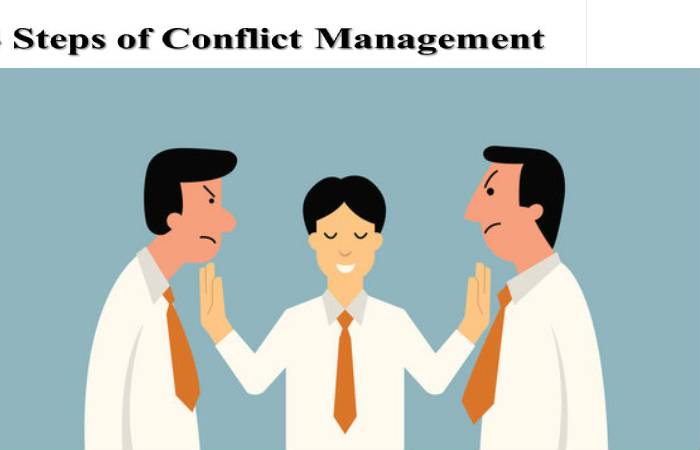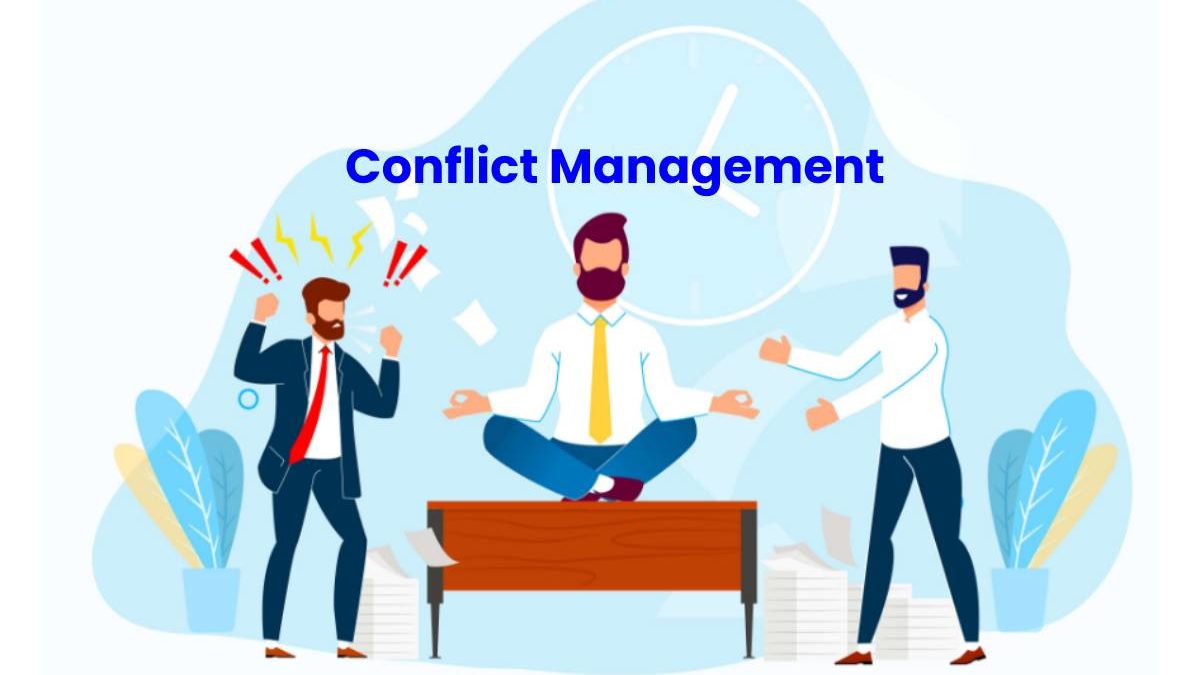Table of Contents
What is Conflict Management?
Conflict management implies having a plan of action so that conflicts that arise in organizations have a quick and effective response and, thus, being able to prevent an unimportant discussion from turning into a more severe problem. Sometimes the parties involved cannot trust to solve the problem themselves.
When planning a conflict management strategy, it is crucial to understand that it is not about giving victory to one of the parties or imposing a ceasefire. When these kinds of decisions make, the parties interrupt the conflict for a time, but the war reappears in the long run.
Instead, to successfully manage conflicts, it is necessary to ensure that the two parties understand each other and agree to compromise. Conflict management, therefore, does not seek to find a solution to a specific problem.
It consists of providing strategies and methods that help the conflict parties establish constructive communication to solve the problem together.
Techniques for Conflict Management

1. First and Foremost
- Staring and doing nothing is not a solution. All employees (and not just managers) should react to the appearance of a significant conflict between two colleagues. If you can’t or don’t want to get involved, you need to inform someone with sufficient responsibility. Some signs accompany conflicts:
2. Avoided
- The parties involved are avoided and not talked about it.
3. Body Language
Moods are transmitted very well through body gestures and movements. If two people meet they show defensive body language, there is likely a conflict.
4. Distance
- When potentially conflicting parties have to speak, they do so very distantly and in a formal tone. Contact on a personal level avoid.
5. Ignore
- When there is a conflict, one of the parties stops taking the other seriously. The consequence is that the parties tend to ignore contrary decisions.
6. Aggression
- The parties involved get irritated in the presence of the other party or even react violently. Even small, unimportant problems end up turning into a dispute.
7. Rumours
- When there have been conflicts for a long time, the usual thing is that it not only affects the parties involved but that rumours begin to circulate among the rest of the colleagues.
8. Latent Conflicts End up Activating Over Time
- It avoids this; it is crucial to intervene as soon as possible, as soon as the signs indicating a risk of conflict are perceived. A match is much easier to solve when it is in the initial phase at that moment. It is easier to reach a satisfactory solution for both parties.
- The more a conflict grows, the more difficult it is to reach an amicable solution. At the very least, one of the parties is more likely to disagree with the proposed solution.
- The conflict grows so large that an open dispute reaches; it is impossible to get a satisfactory result for either party.
- At that point, both parties will have suffered too significant losses.
- It is always advisable to call a meeting to clarify the conflict to improve from the moment it is detected.
- Ideally, a third party should participate in this meeting: a superior, a trusted third party or an external conflict mediator.
Two proven models can apply in meetings: the CCST model and the Harvard method. The two models share, yes, a series of essential prerequisites:
Objectivity
Emotions often contribute to the conflict getting bigger. For this reason, the conversation should not stray from the material plane. Personal attacks are totally out of the question.
Respect
Even when a dispute occurs, it is necessary to treat others with respect. It means letting the other party speak.
Willingness to Compromise
Anyone who takes part in an argument without understanding the other party will block any possible conflict solution. To resolve a dispute, you need to appreciate the shared issues and work from there.
8 Steps to Conflict Management

Step 1. Create a Caring Atmosphere
- To do this, he encourages us to take into account our moment and climbing moment, enabling us to get out of rigid positions based on “me versus you”.
- It also points out a determining factor, the correct choice of the moment. Although some conflicts seem to need to address immediately, most of them choose when to start the resolution process.
- In conflict, as in almost everything, finding the right moment to dialogue becomes an essential element.
Step 2. Clarify Perceptions
- We already know that perceptions are the glasses through which we see reality. Thus, perceptions play a determining role in our be haviour. If we perceive that something is fair, our actions will aim at enforcing justice.
- Clarifying perceptions means broadening the framework and integrating the other party’s perceptions as an indispensable element for conflict management. If you want to find a solution, you will have to consider the other party’s needs (needs that will also base on their perceptions).
Step 3. Target Individual and Shared Needs
- Once we know how each of the parties reviews the conflict and what place they perceive it, we must establish the needs that must be covered to be satisfied.
Step 4. Build a Shared Positive Power
- We tend to believe that power is something negative, and indeed it is something that in conflict we usually use to show that the reason is ours, that it is our position that must win.
- Dudley proposes a different definition of power, in which it “is composed of the attitudes, perceptions, beliefs and behaviours that give people and groups the ability to act or function efficiently.”
- He reminds us that he calls shared positive power that builds the process and moves it toward sufficient conflict resolution.
Step 5. Look to the Upcoming, Then Learn from the Past
- The past does not determine the future, and although we are aware of it, many people believe that if we have not managed a conflict until a specific date, we will not be able to do so.
- This approach limits and detracts from power, so it is always interesting to develop an ability to look at conflict from the present, looking future and learn from the past.
Step 6. Generate Options
- We reached a crucial point, that of proposing options. The author invites us to use this step to generate ideas, creativity and imagination.
- The options are just that, options that must later analyze. The fact that they put on the table does not imply their development.
Step 7. Developing Feasible: Steps for Action
- All the previous steps have one objective, to prepare us to implement the specific actions that the parties can take to improve the relationship (or the particular element of the conflict).
- When he talks about steps to action, he talks about being careful about jumping directly into macro solutions. Dudley talks about doable, specific acts that present a good chance of success, satisfy some individual and shared needs.
- The feasible ones are easy to meet, meet shared needs, and help build trust between the parties.
Step 8. Make Mutually Beneficial Agreements
- The agreements must be realistic and sustainable. We look for contracts that present a high possibility of being maintained in the future. For arrangements to be efficient and durable, they need to base on individual and shared positive power.
- Suppose you are interested in conflict management and you are looking for training to complete your professional profile.
- In that case, you may be absorbed into one of the training courses we offer, do not hesitate to contact us.
The Outcome of Conflict Management
Ideally, once the conflict Knowledge management system is complete, peace will restore. But save in mind that it is impossible to meet both parties’ expectations and wishes, 100%. The likely outcome of conflict management can categorize into one of the following four types:
1. Loss-Loss
- This result does not satisfy either party. In most cases, this situation expects companies‘ day-to-das when a superior end a conflict by taking a tough decision without considering the parties involved’ expectations.
2. Gain-Loss
- In this result, only one of the parties benefits from conflict management. The other party is unhappy with the outcome, which may end up causing a new conflict.
3. Win-Win
- The best result is what is known as a win-win situation. In this type of products, both parties are happy with the resolution of the conflict. The solution is satisfactory for all, and no one ignores.
4. 50:50
- Getting both parties to commit equally is not the ideal result, but it is a satisfying one. Both parties will have to give in and abandon part of their claims, but they will also have the possibility to make equal parts proposals.
Conclusion
In the best case imaginable, a conflict can use as a starting point for improvement. Conflict management use to discover the causes of disputes and, where possible, modify working conditions to reduce the number of conflicts.
Also, the parties involved learn to behave in conflict situations not to get bigger. It is best to resolve conflicts when they are at an early stage.
Also Read: What is Cloud Computing? – Uses, Work, Types, and More
- KNOW MORE:- healthking115

